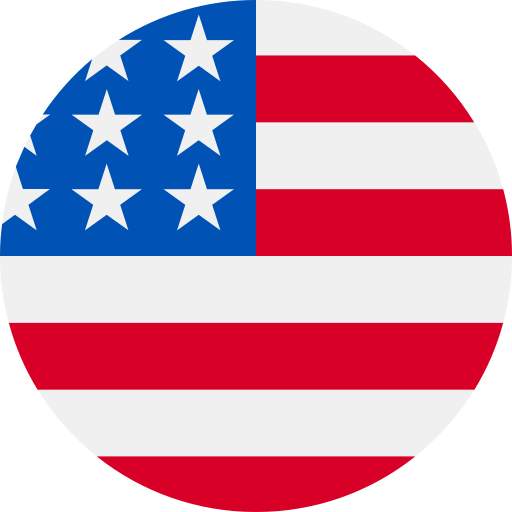The luxury industry, often seen as a symbol of opulence, exclusivity, and excess, is undergoing a transformation. The increasing demand for sustainability is reshaping how high-end brands approach production, sourcing, and their overall environmental impact. Once perceived as an industry indifferent to environmental concerns, luxury brands are now at the forefront of integrating sustainability into their business models. As eco-conscious consumers seek brands that align with their values, luxury labels are responding by embracing ethical practices, transparent supply chains, and innovative materials.
1. The Shift Towards Sustainability in Luxury
Historically, the luxury industry has been synonymous with indulgence and excess. However, in recent years, a growing awareness of environmental issues and the urgency of climate action has spurred a change in consumer attitudes. High-net-worth individuals (HNWIs) and millennials, in particular, are becoming more conscious of the environmental footprint of the products they purchase. As a result, luxury brands are recognizing the importance of incorporating sustainable practices not only to remain relevant but also to meet the evolving expectations of their clientele.
In fact, a 2020 McKinsey report revealed that 67% of consumers considered sustainability an important factor in their purchasing decisions, with the majority of high-end shoppers expressing a preference for brands that prioritize environmental and social responsibility.
2. Sustainable Sourcing and Raw Materials
One of the key aspects of sustainability in luxury is the sourcing of raw materials. Luxury goods often rely on rare and exotic materials, such as animal skins, precious metals, and gemstones, all of which carry a significant environmental and ethical impact. To meet sustainability demands, many luxury brands are making changes to their sourcing practices.
Vegan and Cruelty-Free Materials
Many luxury brands have started shifting away from traditional animal-based materials in favor of cruelty-free alternatives. Vegan leather, made from materials like mushrooms, pineapples, or apples, has become increasingly popular in the fashion industry. Companies like Stella McCartney and Gucci have pioneered the use of plant-based materials and are advocating for cruelty-free production methods. Stella McCartney, in particular, has been a leader in promoting sustainable practices, introducing vegan leathers, organic cotton, and alternative silk into their collections.
Recycled and Upcycled Materials
Recycling and upcycling have gained traction in the luxury sector. Brands like Chanel and Louis Vuitton have introduced collections made from repurposed materials, such as recycled nylon, ocean plastic, and vintage fabrics. By transforming waste into high-quality products, these brands are setting a benchmark for luxury fashion that combines elegance with environmental responsibility.
Ethically Sourced Gemstones and Precious Metals
For luxury jewelry brands, one of the most significant challenges is ensuring that their precious stones and metals are sourced ethically. Companies such as Tiffany & Co. and Cartier have taken steps to ensure their diamonds are traceable through the supply chain to prevent conflicts and exploitation. Tiffany, for example, has committed to sourcing 100% of its diamonds from sustainable and responsible sources. Moreover, initiatives like the “Fairmined” certification allow consumers to purchase gold and other metals that have been mined under ethical labor practices and with environmental considerations in mind.
3. Innovative Manufacturing Practices
The manufacturing process is another area where luxury brands are making strides in sustainability. Traditional manufacturing methods often involve significant waste, high energy consumption, and harmful chemical processes. However, many luxury labels are exploring innovative methods that reduce their environmental footprint.
Zero-Waste Production
Several high-end fashion houses are embracing zero-waste practices in their manufacturing processes. For instance, brands like Patagonia and Reformation are leading the way in creating garments with minimal waste by designing products using pattern-making techniques that maximize the use of materials. Luxury brands such as Burberry have also made strides in this area by adopting a circular approach, recycling textile waste into new products.
Energy Efficiency and Carbon Footprint Reduction
Many luxury brands are striving to reduce their carbon footprints by implementing energy-efficient practices in their factories and distribution centers. High-end brands are investing in renewable energy, such as solar or wind power, and using energy-efficient technologies to minimize their environmental impact. Companies like Gucci and Prada are integrating sustainability into their supply chain operations by measuring and reducing carbon emissions, which is becoming a key element of their overall environmental strategy.
4. Packaging: A Key Focus of Sustainable Luxury
Packaging is a crucial aspect of the luxury industry that often goes unnoticed in the conversation about sustainability. However, packaging in luxury products, whether it’s for fashion, cosmetics, or jewelry, often involves excess waste and plastic. In response, many brands are rethinking how they package their products.
Minimalistic and Recyclable Packaging
Brands like Louis Vuitton, Chanel, and Hermès have started moving toward minimalistic packaging, opting for more sustainable materials like cardboard, glass, or biodegradable alternatives. High-end cosmetics brands such as Lush have also embraced recyclable and reusable packaging, ensuring that the packaging can be repurposed or recycled after use. The goal is to reduce single-use plastics and minimize the environmental footprint of product packaging.
Refillable and Reusable Packaging
Another solution to packaging waste is the introduction of refillable or reusable packaging. Luxury fragrance brands such as Jo Malone and Diptyque have introduced refillable perfume bottles, which allow consumers to buy refills instead of purchasing an entirely new bottle each time. This approach reduces waste while offering consumers a more sustainable option without sacrificing luxury.
5. Transparency and Certifications: Building Trust with Consumers
Transparency is a critical factor in the sustainability movement. Consumers are increasingly demanding to know where their products come from, how they were made, and what impact they have on the environment. Luxury brands are responding by providing greater transparency in their supply chains and obtaining sustainability certifications.
Third-Party Certifications
Certifications like Fair Trade, Global Organic Textile Standard (GOTS), and B Corp are gaining prominence in the luxury market. Brands that receive these certifications have undergone rigorous assessments to ensure they meet high environmental and social standards. For example, the luxury brand Gucci is committed to being carbon neutral by 2025 and has achieved B Corp certification for its sustainability efforts. By obtaining these certifications, luxury brands can demonstrate their commitment to sustainable practices, enhancing consumer trust.
Track-and-Trace Technology
To further enhance transparency, some brands are using track-and-trace technology to provide consumers with detailed information about the sourcing and production of their products. This technology allows customers to trace the journey of their items from raw material to finished product, ensuring that the entire process adheres to sustainability standards.
6. The Future of Sustainable Luxury
The future of luxury is undoubtedly intertwined with sustainability. As eco-consciousness continues to influence consumer behavior, luxury brands will face increasing pressure to adopt responsible practices. However, sustainability is not just a trend—it’s becoming a new standard for luxury. In the coming years, it is expected that luxury goods will become even more eco-conscious, as brands invest in research and development to create groundbreaking materials, adopt new technologies, and build more sustainable supply chains.
For the luxury industry, sustainability is no longer just about being fashionable—it’s about creating value in ways that preserve the environment, respect human rights, and push the boundaries of what luxury can be. As more brands make bold moves toward sustainability, the industry will set the stage for a more responsible, ethical, and eco-friendly future.
Conclusion
The luxury industry’s embrace of sustainability marks a profound shift in how high-end products are created, marketed, and consumed. By prioritizing eco-friendly practices, ethical sourcing, and transparency, luxury brands are reshaping their future while also meeting the growing demand for sustainability. As consumer expectations continue to evolve, those luxury brands that innovate and lead the charge in eco-conscious practices will not only define the next era of luxury but also contribute to a healthier planet for generations to come.
 :
https://www.u-buy.ch/en/
:
https://www.u-buy.ch/en/












